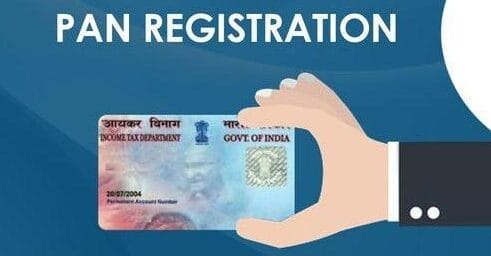The Reserve Bank of India (RBI) is the central banking institution of India, which controls the issuance and supply of the Indian rupee and manages the country’s monetary policy. Here’s a detailed overview of the RBI’s roles, responsibilities, and key functions:
Roles and Responsibilities of the RBI
1. Monetary Authority
- Formulates and implements monetary policy to maintain price stability while keeping in mind the objective of growth.
- Manages inflation and controls the supply of money in the economy.
2. Regulator and Supervisor of the Financial System
- Regulates and supervises banks and non-banking financial institutions to ensure the stability of the financial system.
- Sets prudential norms for banking operations to promote sound banking practices.
3. Issuer of Currency
- Sole authority for issuing banknotes in India.
- Ensures an adequate supply of clean and genuine currency.
4. Manager of Foreign Exchange
- Manages the Foreign Exchange Management Act, 1999 (FEMA) to facilitate external trade and payments.
- Maintains the foreign exchange reserves of the country.
5. Developmental Role
- Promotes and develops financial markets and infrastructure.
- Implements policies to promote financial inclusion and extend banking services to unbanked areas.
6. Regulator of Payment and Settlement Systems
- Ensures a safe, secure, and efficient payment and settlement system.
- Regulates entities involved in payment systems, such as banks and financial institutions.
7. Consumer Protection
- Ensures consumer protection in the financial sector through regulations and the Banking Ombudsman Scheme.
Key Functions of the RBI
1. Monetary Policy
- Sets the repo rate, reverse repo rate, and other policy rates.
- Uses tools like Open Market Operations (OMOs), Cash Reserve Ratio (CRR), and Statutory Liquidity Ratio (SLR) to regulate liquidity.
2. Financial Supervision
- Conducts inspections and audits of banks and financial institutions.
- Issues guidelines and circulars for risk management and compliance.
3. Currency Management
- Designs, prints, and distributes currency notes.
- Manages the withdrawal of unfit notes from circulation.
4. Foreign Exchange Management
- Manages the exchange rate and intervenes in the foreign exchange market to stabilize the rupee.
- Facilitates external trade and investment through the management of foreign exchange reserves.
5. Developmental Initiatives
- Promotes financial literacy and financial inclusion through initiatives like Jan Dhan Yojana and mobile banking.
- Develops and regulates new financial products and services.
6. Research and Data Analysis
- Conducts research on economic and financial issues.
- Publishes reports like the Monetary Policy Report, Financial Stability Report, and Annual Report.
Importance of the RBI
- Economic Stability: Ensures the stability of the Indian economy through effective monetary policy and financial regulation.
- Public Confidence: Maintains public confidence in the financial system and currency.
- Growth and Development: Promotes sustainable economic growth and development through its developmental and regulatory roles.
- Financial Inclusion: Strives to include all sections of society in the formal banking system, thereby promoting inclusive growth.
The Reserve Bank of India plays a pivotal role in the Indian economy as the central bank, regulator, and supervisor of the financial system. Its functions and responsibilities are critical for maintaining economic stability, ensuring the integrity of the financial system, and promoting inclusive growth. Understanding the RBI’s role helps in appreciating its impact on various aspects of the economy and its contribution to the nation’s overall development.
At Ujjwal Gupta & Co
We, at Ujjwal Gupta & Co, are dedicated to delivering personalized, high-quality solutions tailored to meet your financial and business needs. With our team of professionals and a client-first approach, we ensure that every challenge is met with expert guidance and strategic insight.
We are dedicated to ensuring your business’s success by providing best service practice available in the industry and that too at a cost effective pricing. Our team of experts is excited to work with you and provide the support you need to thrive in the Indian business landscape.
Our only motive is to create Value for Our Clients and accordingly, have a Client Value System at our Office.
So, let us help you navigate the complexities of finance and compliance, empowering you to focus on what matters most — growing your business. Get in touch today, and take the first step towards financial peace of mind.
The Reserve Bank of India (RBI) is India’s central bank, responsible for regulating the country’s monetary policy, managing currency issuance, supervising the banking system, and maintaining financial stability. It was established on April 1, 1935, under the RBI Act, 1934.
The RBI performs several critical functions:
- Formulating and implementing monetary policy to control inflation and ensure economic growth.
- Regulating and supervising banks and financial institutions.
- Issuing and managing currency notes.
- Managing foreign exchange reserves and regulating foreign exchange under FEMA.
- Acting as the banker to the government and financial advisor.
The Reserve Bank of India is fully owned by the Government of India, which acquired it in 1949, making it a government-owned entity.
The RBI uses tools like the repo rate, reverse repo rate, cash reserve ratio (CRR), and statutory liquidity ratio (SLR) to control liquidity and demand in the economy. By adjusting interest rates, the RBI manages inflation levels and ensures economic stability.
The Monetary Policy Committee (MPC) is a six-member committee formed to decide India’s monetary policy, specifically the repo rate. The committee meets every two months, and its decisions influence interest rates, liquidity, and inflation.
Under the Foreign Exchange Management Act (FEMA), 1999, the RBI regulates and manages foreign exchange transactions to stabilize the rupee and promote orderly development of the forex market.
- Repo Rate: The rate at which the RBI lends money to commercial banks.
- Reverse Repo Rate: The rate at which the RBI borrows money from commercial banks.
These rates influence overall liquidity and credit availability in the economy.
The RBI has the sole authority to issue currency notes in India (except for ₹1 notes and coins, issued by the government). It follows the Minimum Reserve System, ensuring the adequate supply and management of currency.
The RBI regulates and supervises banks by:
- Granting banking licenses.
- Monitoring compliance with regulations like CRR, SLR, and capital adequacy norms.
- Conducting inspections and audits.
- Addressing bank failures and maintaining depositor confidence.
The RBI promotes financial inclusion through initiatives like:
- Encouraging banks to open branches in rural and underserved areas.
- Implementing the Pradhan Mantri Jan Dhan Yojana (PMJDY).
- Supporting digital payment systems like UPI and promoting mobile banking.
- Strengthening microfinance institutions and NBFCs.
Why Choose UGC?

Client Centric Approach
Client is the key driver of our service offerings. Our approach to service offerings is based on a client centric and customized approach. Our specialized teams are a mix of technical and industry experience in order to serve clientele for their specific needs.

Team Work
We have built high performing teams supported by strong work ethic. Our team is a mix of experts, professionals and support staff from technical and varied academic, social and ethnic backgrounds. We believe diversification plays a vital role in motivating the team.

Quick Turnaround
We always endeavour for a quick turnaround time to serve our clientele. We are supported by an experienced and client focussed support teams to offer timely services to our clientele. In case of any business exigencies and time sensitive service requirements, you can always count on us.

Open Communications
We believe that open communication is the core principle in order to demonstrate trust, build long lasting and valuable relationships with clientele. We are committed to ensuring transparency in communication, service offerings and delivery. We provide professional services to our clients.

Client Value System
We value for the Client time and thus, we offer services that are value for money. Quality professional services are provided to our clients, so that they are able to achieve their desired results. We are a quality trademark in the industry and thus, our clients count on us always.

Quality in Delivering Work
Our service offerings are driven by quality and reviews at every level. We strive to provide a qualitative and value-added delivery to our clientele. At all times, we endeavour to provide exceptional client service by meeting client expectations and driving client satisfaction.















